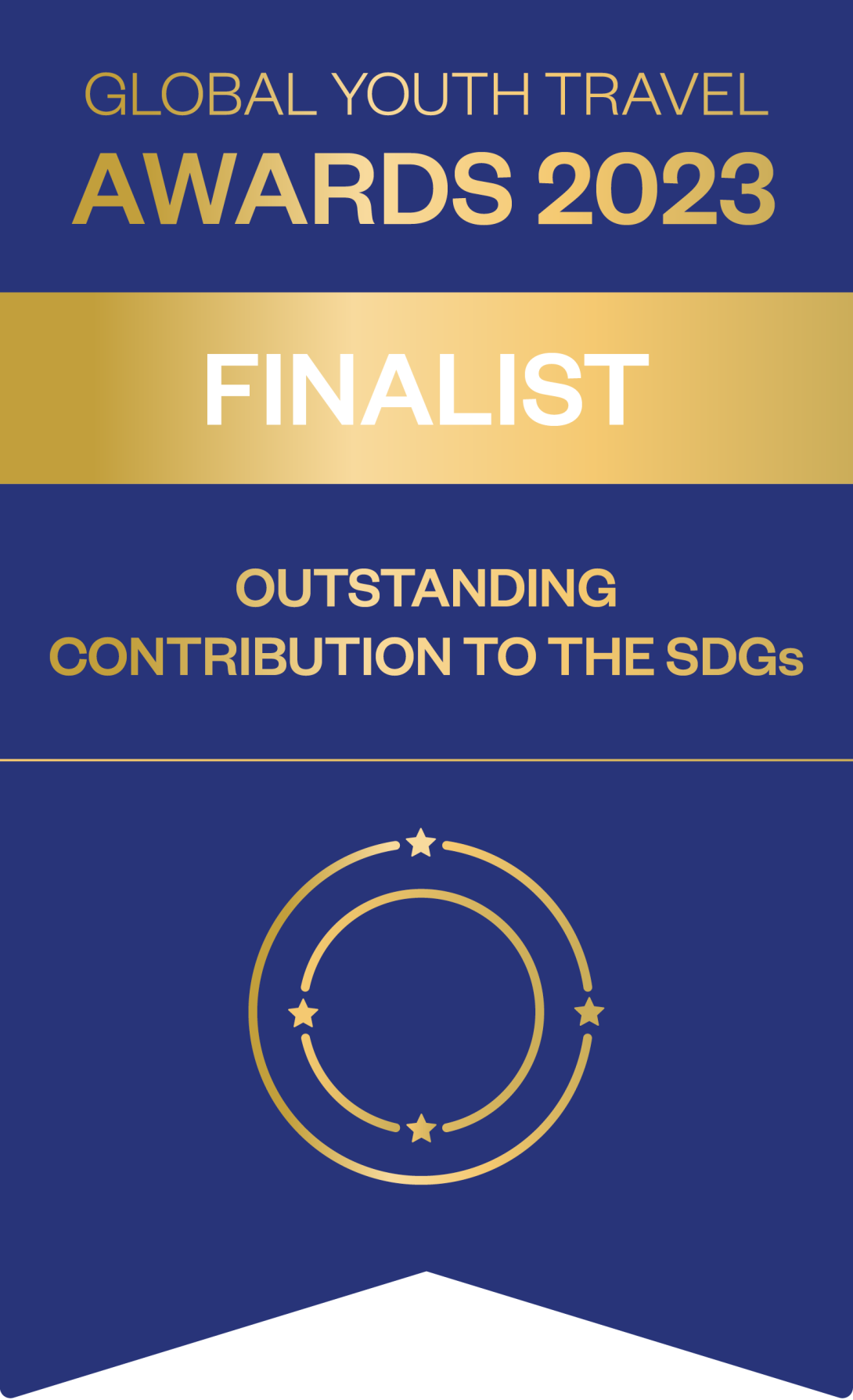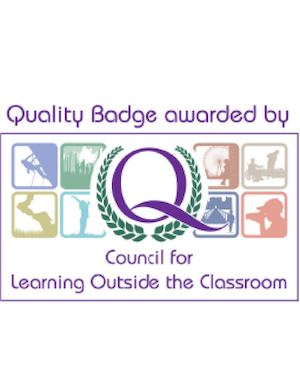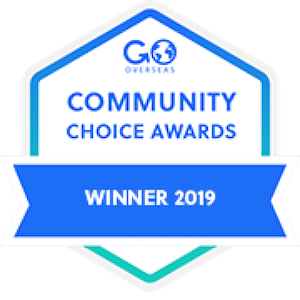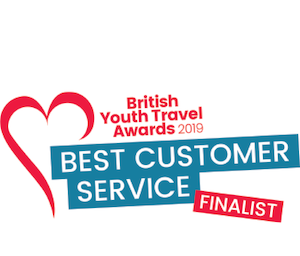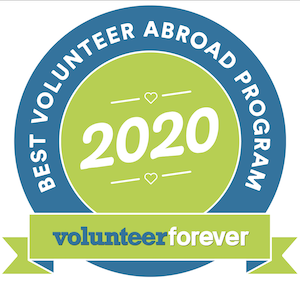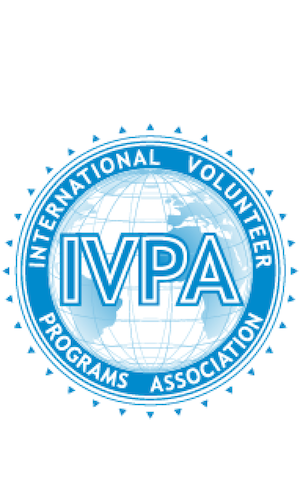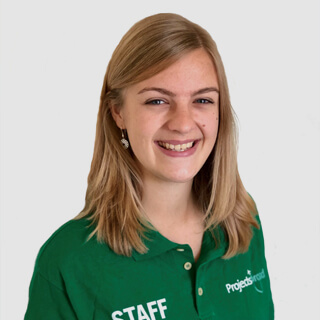Volunteering abroad is a transformative experience that’ll have you reaching for the camera again and again.
And while it’s only natural you’ll want to document each and every memory, it’s crucial to take an ethical approach to snapping the people and places you encounter.
With that in mind, we’ve put together a quick guide to help you navigate the ethics of taking photos during your volunteer trip.
But remember: there’s no ‘one-size-fits-all’ rule. You’ll need to rely on your own sense of empathy and intuition to do what’s right.
Here are our top tips for ethical travel photography, based on over three decades of experience around the globe…

Build trust and rapport
Take the time to build a relationship with the community before whipping out your camera.
Introduce yourself and explain why you’re there and want to take a photo.
Establishing trust and connection shows respect for people’s dignity, but it also inevitably leads to more meaningful photographs, too – that’s a win-win!
Creating relationships with the people and places you hope to capture on film is non-negotiable if you’re looking to achieve images with texture and a raw, authentic quality.

Seek consent
Always get explicit consent from individuals before taking their photos, especially children and vulnerable groups.
In some cultures, children over a certain age can give consent, but it’s best to ask parents whenever possible.
Make sure everyone understands how the images will be used (what Roaming Sparrow’s Tim terms ‘informed consent’). If you sense any hesitation or discomfort, step away and put the camera down.
When in doubt, never be too shy to ask for permission or guidance.
Always be mindful of power dynamics and how you slot into the local landscape. Don’t forget that during your time away, you’ll be representing Project Abroad’s ethical framework, too. We’re counting on you!

Respect cultures and beliefs
Do your homework on local customs and sensitivities surrounding photography. Always consult with local partners, community leaders, or on-the-ground Projects Abroad staff to ensure you’re in step with norms and traditions.
Ever heard of ‘soul-capturing’? As photographer Sofia Bergmann explains, for many Indigenous groups, a little piece of your spirit is snatched away when you have your picture taken.
This is just one example of the many cultural nuances at play when it comes to travel photography. While you can hardly be expected to know the ins and outs of every destination’s cultural tapestry, stick to the mantra: when in doubt, ask.

Promote empowering narratives (not stereotypes)
Use your camera for good by crafting balanced and respectful narratives that highlight the community’s strengths, resilience, and achievements.
You should be showcasing the collaboration, skill-sharing, and positive impact you get to witness firsthand.
By the same token, get away from clichéd snaps that focus on poverty, and whatever you do, steer well clear of the saviour trap.
It’s highly likely that as a volunteer, you’ll be coming from a position of relative privilege: be mindful of that, and avoid anything with the faintest whiff of you swooping in to ‘save’ the local community.
Use your common sense! A good rule of thumb is to focus on capturing volunteers living and working alongside locals, rather than creating a sense of distance by pinning entire communities down in a spotlight.
Treat people as human beings, not story material – and whatever you do, say no to ‘poverty porn’.

Stay safe and dignified
Remember the vulnerable groups we mentioned earlier? These are no different from groups you’d consider ‘high-risk’ back home.
They include the elderly, children, people living with illness or disability, members of marginalised or disempowered communities, people fleeing war and disasters, and victims of assault, persecution and discrimination: in short, anyone unable to properly advocate for themselves.
Never take photos of people in vulnerable situations without their consent. Make sure they understand the process.
Stay well away from portraying people as helpless victims, and be especially careful when working with children and nudity.
Don’t forget that people’s safety, wellbeing, and dignity always trump your right to take a photo. It’s always better to be safe than sorry.

Give context, share responsibly
Provide context for your photos by adding captions or descriptions that explain the situation in all of their multifaceted nuance.
This helps avoid misrepresentation and means you’ll be helping shape a deeper understanding of the community’s reality.
In a similar vein, never alter content or context to misrepresent a situation.
Ethical storytelling is about weaving a narrative with integrity. While it can be tempting to up the drama factor by playing around with context – just don’t.
When sharing your photos, be conscious of how they might be perceived and the potential impact on individuals and communities.
Avoid sharing sensitive information or anything that could be used to identify individuals in vulnerable situations. Make sure you get explicit consent to share your material far and wide.

Photography ethics for intrepid travellers
Volunteering abroad is a powerful way to contribute to global communities.
By following these simple rules of thumb, you can make sure you come back with beautiful images that are respectful and accurate. They should promote a positive understanding.
Always remember that trust is something you earn. The stories you capture should honour the people who share them with you first and foremost.
Help us create a more just and equitable world through ethical storytelling. Share this guide, follow our principles, and contribute to a narrative that celebrates the strength and resilience of communities worldwide.
Our guiding principles
Truth and Accuracy: We prioritise genuine narratives that reflect the complexities and nuances of each community. We avoid stereotypes and sensationalism, focusing on authentic experiences and positive impact.
Respect and Dignity: We treat all individuals with respect, ensuring their consent and understanding before capturing any content. We avoid exploiting vulnerabilities and prioritise the wellbeing of everyone involved.
Collaboration and Empowerment: We work hand-in-hand with local communities, valuing their perspectives and expertise. We empower them to share their stories in their own words, fostering collaboration and mutual respect.
Impact, Not Issues: We focus on showcasing positive outcomes and the transformative power of our work. We avoid portraying communities solely through their challenges, highlighting their strengths and resilience instead.
Note: This guide is intended to provide ethical guidance and is not a substitute for legal advice. Please consult relevant laws and regulations regarding consent and privacy.
Want to travel and take photos?
We can help! Contact us to find your perfect trip.
Our accreditations


